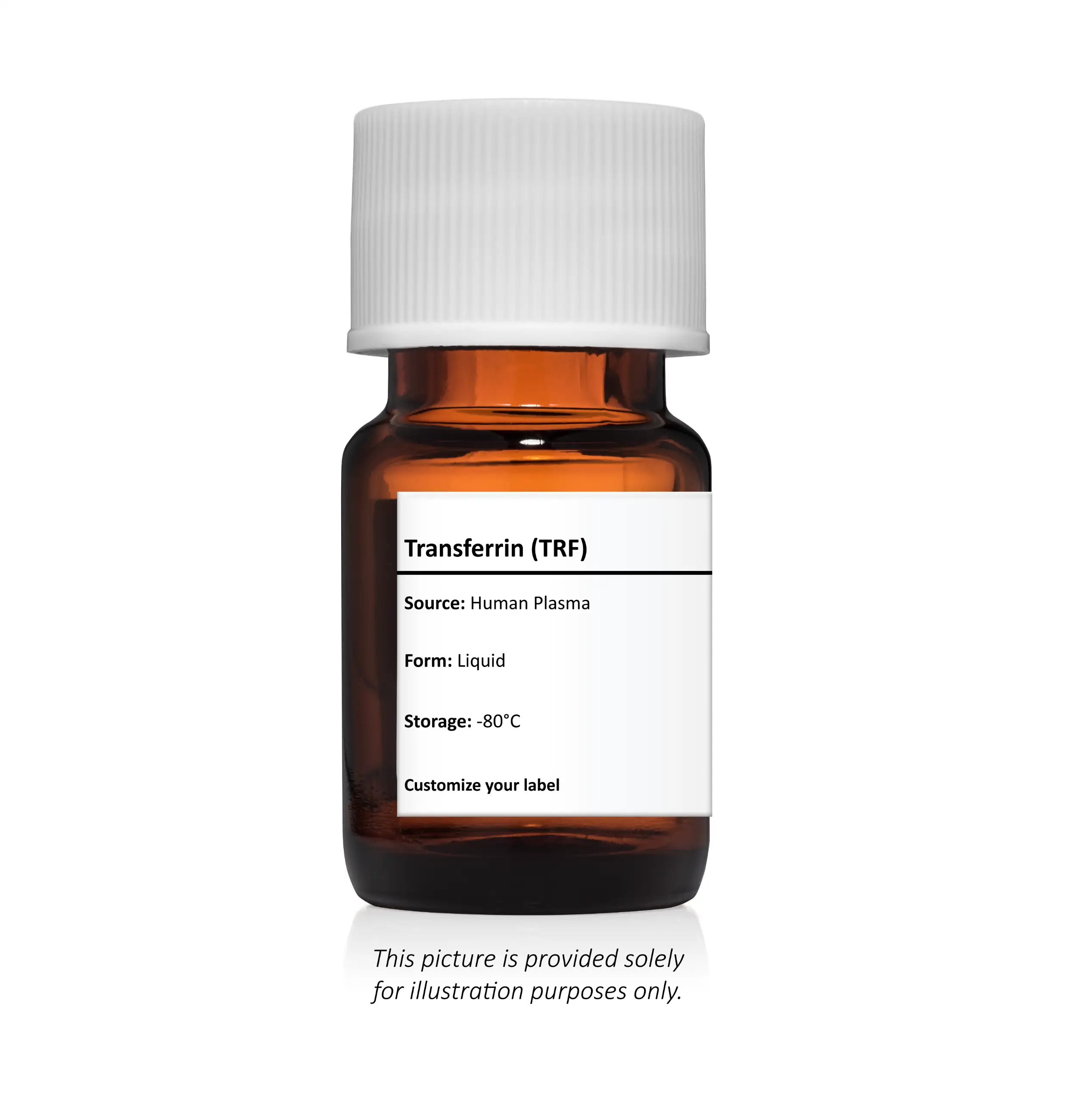Transferrin
Transferrin is a glycoprotein that binds iron very tightly but reversibly. Although iron bound to transferrin is less than 0.1% (4 mg) of the total body iron, it is the most important iron pool, with the highest rate of turnover (25 mg/24 h).
| Product Specifications | |
|---|---|
| Source | Human Plasma |
| Form | Liquid |
| Purity | Partially Purified |
| Storage | -80°C |

Transferrin has a molecular weight of around 80 kDa and contains 2 specific high-affinity Fe(III) binding sites. The affinity of transferrin for Fe(III) is extremely high at pH 7.4, but decreases progressively with decreasing pH below neutrality. When not bound to iron, it is known as “apo-transferrin” . In humans, transferrin consists of a polypeptide chain containing 679 amino acids. It is a complex composed of alpha helices and beta sheets to form two domains (the first situated in the N-terminus and the second in the C-terminus). The N- and C-terminal sequences are represented by globular lobes and between the two lobes is an iron-binding site.
The amino acids which bind the iron ion to the transferrin are identical for both lobes; two tyrosines, one histidine, and one aspartic acid. In order for the iron ion to bind, an anion is required, preferably carbonate. Recent advances in transferrin research have led to animal-free and recombinant transferrin that avoids the concern using of blood plasma derived transferrin. Transferrin also has a transferrin iron-bound receptor; it is a disulfide-linked homodimer. In humans, each monomer consists of 760 amino acids. It enables ligand bonding to the transferrin, as each monomer can bind to one or two molecules of iron. Each monomer consists of three domains: the protease domain, the helical domain, and apical domain. The shape of transferrin receptor resembles a butterfly-like complex, due to the three clearly shaped domains.
